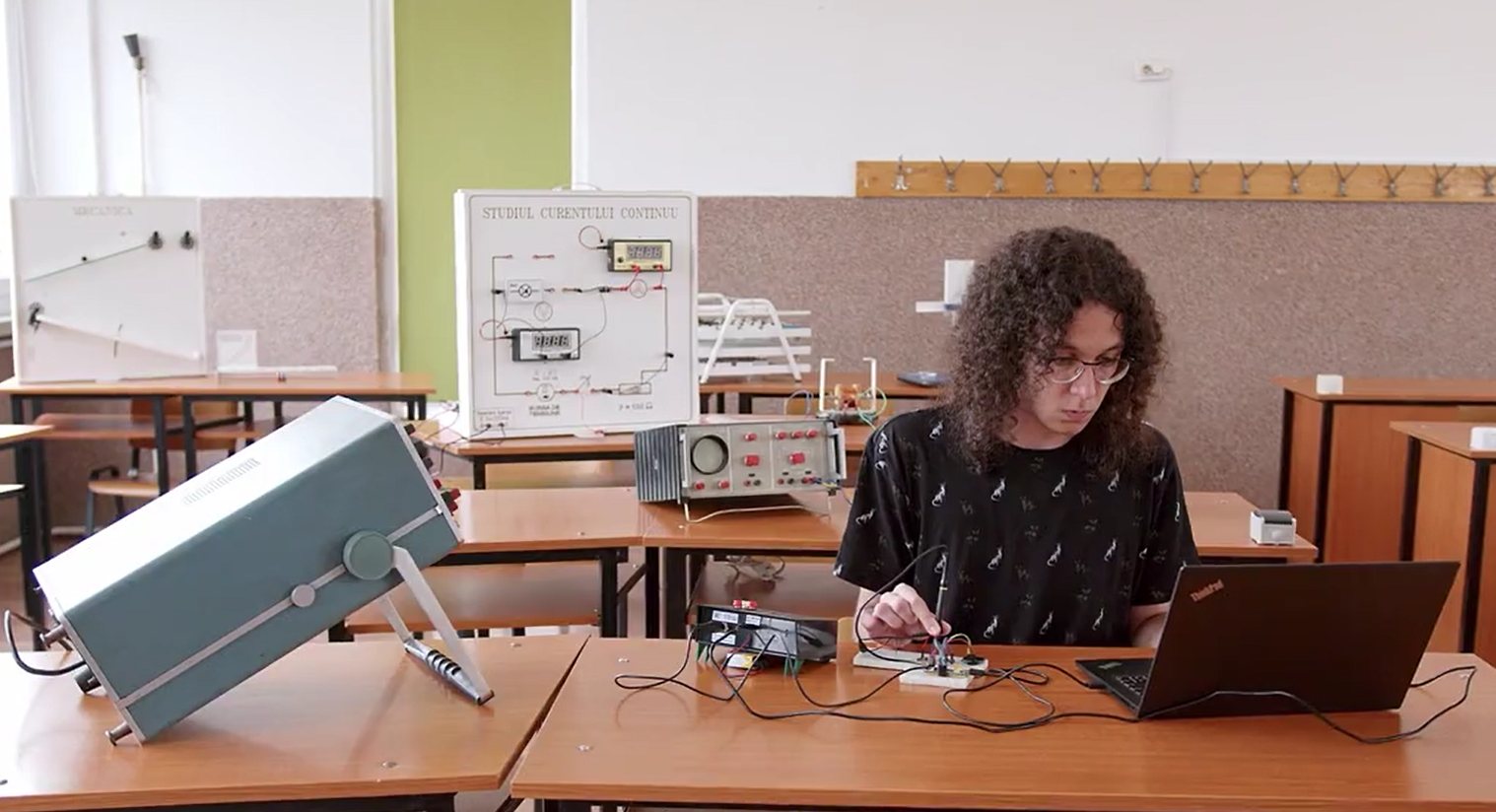연락처
텍트로닉스 담당자와 실시간 상담 6:00am-4:30pm PST에 이용 가능
전화 문의
9:00am-6:00PM KST에 이용 가능
다운로드
매뉴얼, 데이터 시트, 소프트웨어 등을 다운로드할 수 있습니다.
피드백
Vlad Tomoiagas Story
Analyzing data from a homemade Oscilloscope using TekScope PC Analysis Software – Vlad’s Story
Learn more about the products mentioned in this story here:
Vlad Tomoiaga, a student at Technical University of Cluj-Napoca in Cluj-Napoca, Romania, has been passionate about electronics since he was very young. Growing up Vlad’s dad gave him an old computer and he regularly took it apart and put it back together. He also remembers spending time just inspecting the motherboards up close.
In his last year of high school, he realized his new microcontroller had a fast analogue to digital converter built in and thought to himself, “What else samples signals?” and realized he could make an oscilloscope.
“I mostly built it out of pure curiosity,” he said.
When looking for a way to output the data he captured on his homemade scope, Vlad discovered TekScope PC Analysis Software.
“TekScope software fits perfectly because it works with pretty much any brand of instrument,” he said. “I even managed to get it working with my own instrument.”
TekScope allows Vlad to do further analysis of the data he captures on his scope.
“I like the fact that TekScope mimics the user interface of an actual Tektronix scope,” Vlad said.
Tektronix first met up with Vlad in the summer before he started college. He had just built his oscilloscope and contacted us to compliment TekScope. We checked in on Vlad at the end of his first year of study and this is what he had to say.
“College is going great! I've met many nice people and studied subjects which I enjoy.
I still use TekScope, mostly when I need to do measurements which are not built into my self-made oscilloscope (especially the FFT feature) or when I want so to see the signal on a larger screen. In the meantime, I was gifted an actual Tek oscilloscope, a Tektronix 453, built in 1967 (judging by the labels on the inside), from my high school physics teacher. It's still mostly functional but I avoid using it, as I'm afraid its ageing capacitors could become damaged, and I want it to keep it in working condition for as long as possible.
I am still working on all sorts of wonderful projects, although at a slightly slower rate since starting college.
For the past few months, I've been playing with the Raspberry Pi Pico development board. My latest project involves running a small version of Linux on it. The Pico is not normally capable of running Linux (it doesn't have the necessary memory addressing system), but I was able to achieve it by simulating a completely different CPU architecture in software and adding some external memory.
It was a neat trick, which the whole maker community enjoyed (it got featured on Tom's Hardware, Hackaday and Hackster). I had a lot of fun making it, pushing the microcontroller past its limits. I strongly believe in the open-source community, and I publicly share my significant projects on GitHub. After I finish with this semester's final exams, I am planning on improving the functionality of my oscilloscope project, by remaking the analog circuitry with the skills I've gained since starting college.
My studies have given me some interesting opportunities so far. The professors I've encountered are impressed by my projects and they're happy to give me technical advice and access to some of the lab equipment. I was also allowed to participate in activities addressed to higher study years. This semester, I took an optional FPGA course meant for 2nd and 3rd year students. It was something completely new to me and I thoroughly enjoyed it.
Learn more about how to use TekScope software to analyze waveforms on an oscilloscope.


